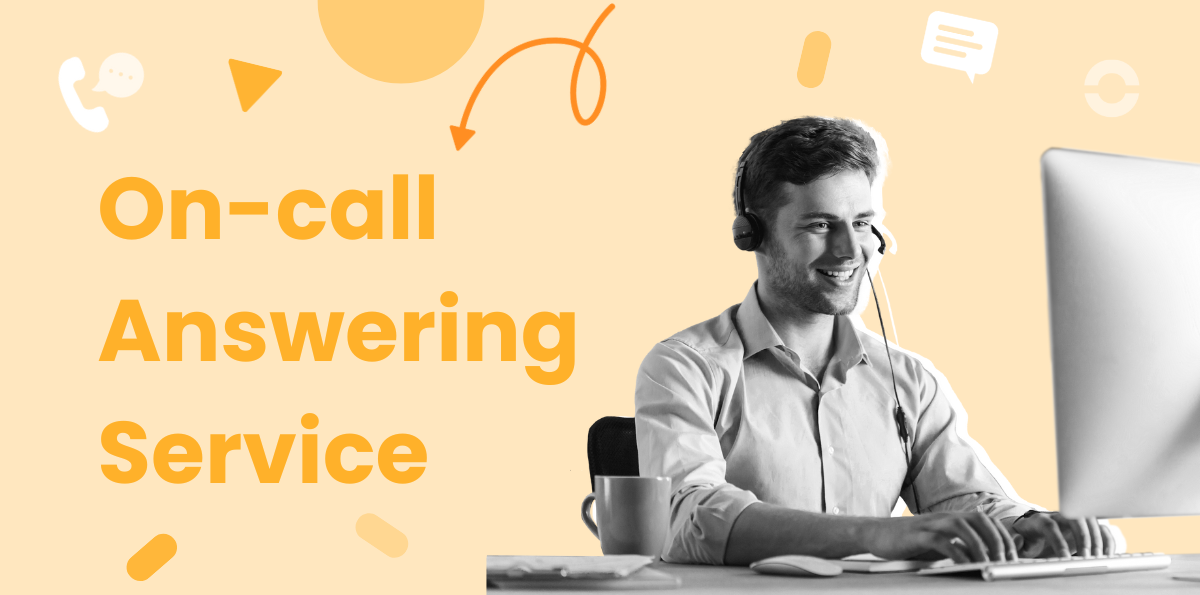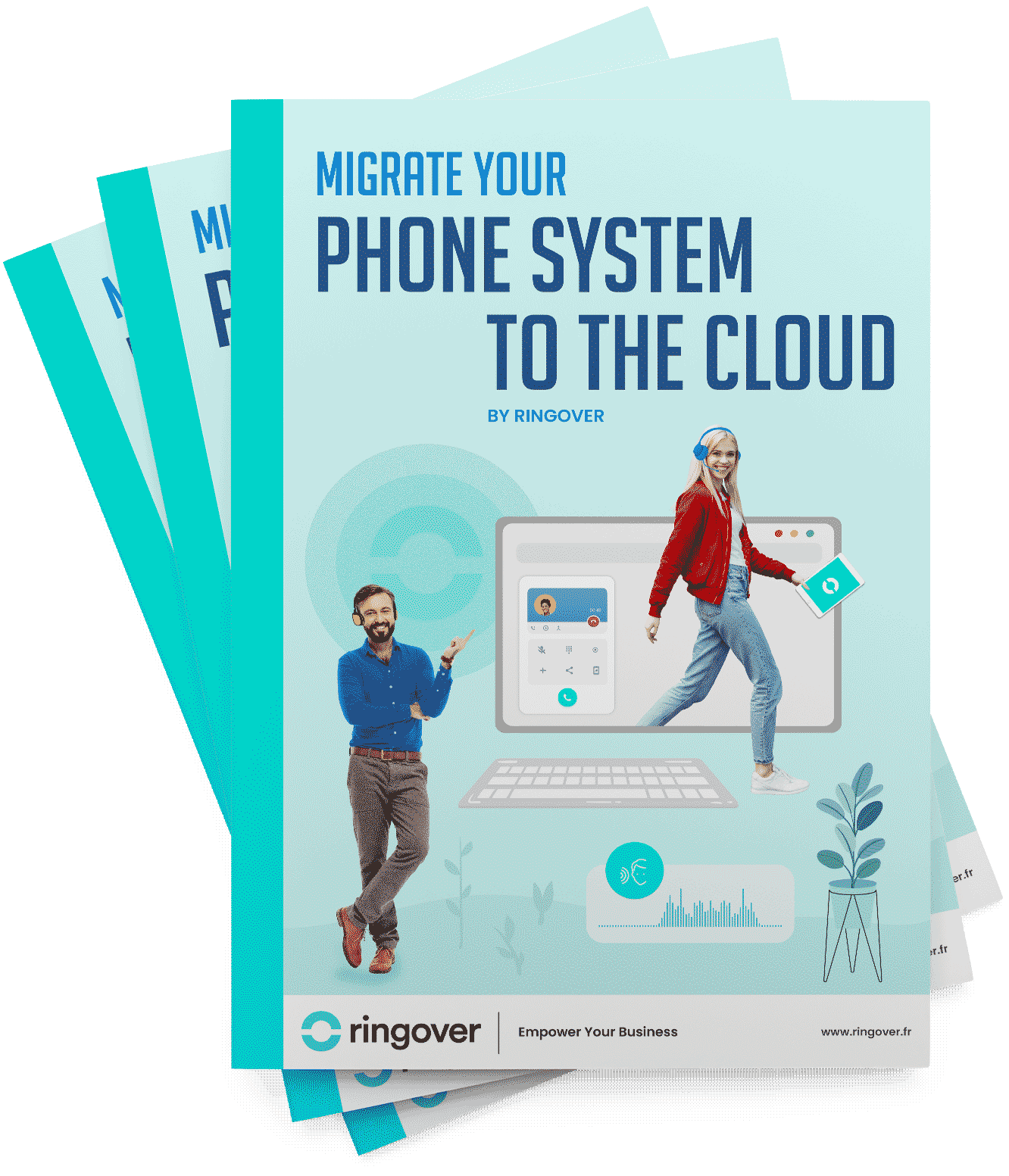Summary
Phone calls remain the most effective way to contact a business. Yet, while consumers expect an answer in under a minute, the reality is they often wait an average of three minutes.
And that's when they call during working hours. When clients try to reach a business after hours and receive no response, the result is often dissatisfaction. In fact, over one-third of customers never attempt to call back.
To be reachable at all times and provide top-tier service, it's essential to implement an on-call answering service. This ensures your callers can contact your business and get the answers they need—quickly and at any time of day.
Setting up an on-call answering service comes with several challenges. To get the most out of it and provide an excellent experience to both current and potential clients, it's crucial to understand the basics.
In this article, Ringover explains why every organization should implement an on-call answering service and outlines the key principles to help you structure your system and improve customer satisfaction.
What Is an On-Call Answering Service?
“The purpose of a business is to create and keep a customer.”
This quote from renowned economist Theodore Levitt captures a vital truth. When we talk about customer satisfaction, we inevitably touch on customer retention.
According to a study by Smart Tribune, 88% of customers say that immediate support increases their loyalty.
An on-call answering service contributes directly to customer retention by allowing your business—using IVR (interactive voice response)—to provide real-time answers to callers, 24/7.
On-Call Answering Service vs. Phone Answering Service: What's the Difference?
While researching on-call answering services, you've probably come across the term "phone answering service." Though similar, the two are not interchangeable. Here's how they differ:
- Working time: An answering service counts all hours as active working time, while for an on-call service, only the actual interventions (calls handled) are considered active work.
- Availability: On-call answering services are typically available 24/7, whereas standard answering services operate during specific, set hours.
An on-call answering service means that an agent is required to be reachable at all times to assist customers or prospects—or even to support other agents (for example, in a technical support role).
This setup requires the agent to have access to a mobile phone and be ready to respond, no matter where they are or what time it is.
There are four key components of a successful on-call answering service:
- Telephony infrastructure: The type of phone system you use determines how feasible it is to implement on-call lines.
- Human resources: The number of agents and departments involved will shape the structure of your answering service.
- Staff training: The skills of your on-call agents are critical for delivering high-quality service.
- Information resources: An on-call answering service should provide reliable, regularly updated information to customers and prospects.

Why You Should Implement an On-Call Answering Service
Whether your clients are seeking information, advice, or want to provide feedback on a product or service, they shouldn't be left without a response. Email and alternative communication channels (social media, chatbots, etc.) are not always sufficient. That's because clients have no way of knowing when their message will be read or how long they'll wait for a response.
Implementing an on-call answering service is crucial to shortening that wait time and meeting customer expectations for fast, reliable support—no matter the hour.
Thanks to this setup, your callers can access information about your products and services. Some offerings are simply easier to explain over the phone than through written materials. Phone communication also enables your company to personalize interactions, which resonates with the majority of consumers.
Still, it's important to inform callers about your business hours, so they know when they can reach the specific person or department they're looking for.
Setting Up an Effective On-Call Answering Service
1. Define the Purpose of Your On-Call Answering Service
Start by identifying why your business needs an on-call answering service. Consider your customers' and prospects' needs and the most frequently asked questions.
Use cases where an on-call answering service is highly recommended include:
- Emergency repairs
- Customer service complaints
- Information requests
- Order tracking
- Payment processing
2. Set the Service Hours
Depending on your business's operating hours, define when your on-call service will be available.
If your goal is 24/7 support, especially for urgent issues like technical breakdowns, your on-call line should be active outside your regular business hours and resume normal operations once the office opens.
3. Choose a Dedicated On-Call Number
Make it easy for clients and prospects to reach you by using a dedicated phone number for the on-call answering service.
Cloud-based phone systems let you select a number in just a few clicks. You can even port an existing landline or mobile number.
4. Record a Dedicated Voicemail Message
Let your callers know they're contacting you outside of normal hours, and inform them that wait times may be slightly longer due to reduced staffing.
A well-crafted voicemail greeting specifically for the on-call service helps manage expectations.
Ringover's online studio lets you create as many voicemail greetings as you want, based on different call routing scenarios.
That way, your interactive voice response (IVR) system can deliver tailored messages during on-call hours.
5. Set Up Call Routing
Establish a duty schedule so that calls are properly handled at all times. You can configure routing rules so calls go straight to the on-duty agent, bypassing the general switchboard.
Advanced phone solutions allow you to designate who's responsible for taking calls during specific periods.
For instance, one agent might handle calls from Friday 6 p.m. to Saturday morning, and another takes over for the rest of the weekend.
Tools like Ringover can redirect calls to employees' personal mobile phones—without compromising their privacy. This means you don't need to invest in separate work phones for your on-call team.
Want to implement an on-call answering service for your company? With Ringover, it's easy. Request a demo and try the platform for free.
On-Call Answering Service FAQ
How much does a call answering service cost?
A call answering service can cost anywhere from about $100 to $400 per month. But if you have a customer service team, you can provide on-call answering with a VoIP software like Ringover.
How much does a virtual receptionist cost?
Ringover's VoIP phone provides a virtual receptionist for as little as $44 per user/month. This feature automatically answers calls, connecting them with the right person to streamline your call management.
What is the best phone answering service?
Here are the best phone answering services in 2025.
- Ringover: Provides a virtual receptionist and intelligent routing to allow businesses to optimize their incoming calls.
- Ruby Receptionist: This service provides actual receptionists who respond to incoming calls and queries.
- Abby Connect: Similar to Ruby Receptionist, this business trains people on how to respond to calls appropriately for your business.
- Smith.ai: An AI technology handles basic questions, while more complex questions are routed to staff.
- ReceptionHQ: This business is a class answering service which differentiates itself with US-based staff.
Who can be on-call?
Any employee, whether in the private or public sector, can be on-call if requested by their employer.
What's the difference between an on-call shift and phone coverage?
The main difference is in the definition of actual working time. Phone coverage counts the entire shift as working time, while on-call duty only counts the time spent intervening.
How to set up a call answering service?
A cloud-based business phone system is essential. It should allow automatic call forwarding to mobile or external numbers during on-call hours.
What is an on-call phone number?
An on-call number is a dedicated line assigned to a specific team or service, used outside standard business hours to handle urgent or critical situations—ensuring business continuity even when your office is closed.
Published on May 28, 2025.




